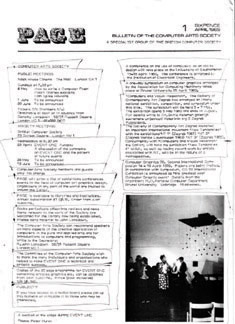Ross Knox Bassett: To the Digital Age: Research Labs, Start-up Companies, and the Rise of MOS Technology (2007)
Filed under book | Tags: · computing, history of computing, history of technology, technology, transistor

The metal-oxide-semiconductor (MOS) transistor is the fundamental element of digital electronics. The tens of millions of transistors in a typical home—in personal computers, automobiles, appliances, and toys—are almost all derive from MOS transistors. To the Digital Age examines for the first time the history of this remarkable device, which overthrew the previously dominant bipolar transistor and made digital electronics ubiquitous. Combining technological with corporate history, To the Digital Age examines the breakthroughs of individual innovators as well as the research and development power (and problems) of large companies such as IBM, Intel, and Fairchild.
Bassett discusses how the MOS transistor was invented but spurned at Bell Labs, and then how, in the early 1960s, spurred on by the possibilities of integrated circuits, RCA, Fairchild, and IBM all launched substantial MOS R & D programs. The development of the MOS transistor involved an industry-wide effort, and Bassett emphasizes how communication among researchers from different firms played a critical role in advancing the new technology. Bassett sheds substantial new light on the development of the integrated circuit, Moore’s Law, the success of Silicon Valley start-ups as compared to vertically integrated East Coast firms, the development of the microprocessor, and IBM’s multi-billion-dollar losses in the early 1990s. To the Digital Age offers a captivating account of the intricate R & D process behind a technological device that transformed modern society.
Publisher JHU Press, 2007
Johns Hopkins Studies in the History of Technology
ISBN 0801886392, 9780801886393
440 pages
PDF (updated on 2012-7-25)
Comment (1)Tim Wu: The Master Switch: The Rise and Fall of Information Empires (2010)
Filed under book | Tags: · history of technology, industry, internet, media history, politics, technology

In this age of an open Internet, it is easy to forget that every American information industry, beginning with the telephone, has eventually been taken captive by some ruthless monopoly or cartel. With all our media now traveling a single network, an unprecedented potential is building for centralized control over what Americans see and hear. Could history repeat itself with the next industrial consolidation? Could the Internet—the entire flow of American information—come to be ruled by one corporate leviathan in possession of “the master switch”? That is the big question of Tim Wu’s pathbreaking book.
As Wu’s sweeping history shows, each of the new media of the twentieth century—radio, telephone, television, and film—was born free and open. Each invited unrestricted use and enterprising experiment until some would-be mogul battled his way to total domination. Here are stories of an uncommon will to power, the power over information: Adolph Zukor, who took a technology once used as commonly as YouTube is today and made it the exclusive prerogative of a kingdom called Hollywood . . . NBC’s founder, David Sarnoff, who, to save his broadcast empire from disruptive visionaries, bullied one inventor (of electronic television) into alcoholic despair and another (this one of FM radio, and his boyhood friend) into suicide . . . And foremost, Theodore Vail, founder of the Bell System, the greatest information empire of all time, and a capitalist whose faith in Soviet-style central planning set the course of every information industry thereafter.
Explaining how invention begets industry and industry begets empire—a progress often blessed by government, typically with stifling consequences for free expression and technical innovation alike—Wu identifies a time-honored pattern in the maneuvers of today’s great information powers: Apple, Google, and an eerily resurgent AT&T. A battle royal looms for the Internet’s future, and with almost every aspect of our lives now dependent on that network, this is one war we dare not tune out.
Part industrial exposé, part meditation on what freedom requires in the information age, The Master Switch is a stirring illumination of a drama that has played out over decades in the shadows of our national life and now culminates with terrifying implications for our future.
Publisher Alfred A. Knopf, 2010
Borzoi Books
ISBN 0307269930, 9780307269935
366 pages
review (Peter Decherney, Nathan Ensmenger, Christopher S. Yoo)
PDF (EPUB; updated on 2012-7-16)
Comment (0)PAGE, 1-71 (1969-1985, 2004-2014)
Filed under magazine | Tags: · art history, computer art, computing, history of computing, history of technology, media art, media history, united kingdom

“PAGE is the bulletin of the Computer Arts Society.
The Computer Arts Society was one of the most influential British computer art groups. It was founded in 1968, followed by an inaugural exhibition, Event One, in March 1969 at the RCA. George Mallen, Alan Sutcliffe and Lansdown set up CAS as an offshoot of the British Computer Society, to further the use of computers by artists. CAS flourished through the 1970s and early 80s.
PAGE was initially published from April 1969 until 1985 and was named after the concept of paging (the use of disk memory as a virtual store which had been introduced on the Ferranti Atlas Computer). It featured major British and international computer artists and hosted some fundamental discussions as to the aims and nature of computer art. Its first editor was Gustav Metzger, thereby establishing from the beginning an association with the avant-garde. Metzger was ‘excited’ to discover CAS and ‘people coming together’ as he had ‘felt quite isolated.’ As early as 1961, Metzger had stated that ‘…the artist may collaborate with scientists, engineers.’ As many members were outside of London or overseas, PAGE was an important disseminator of information.”
Publisher Computer Arts Society, London
PDFs (1969-1985 & 2004-2014, updated on 2017-12-2)
PDFs (1969-1985)

